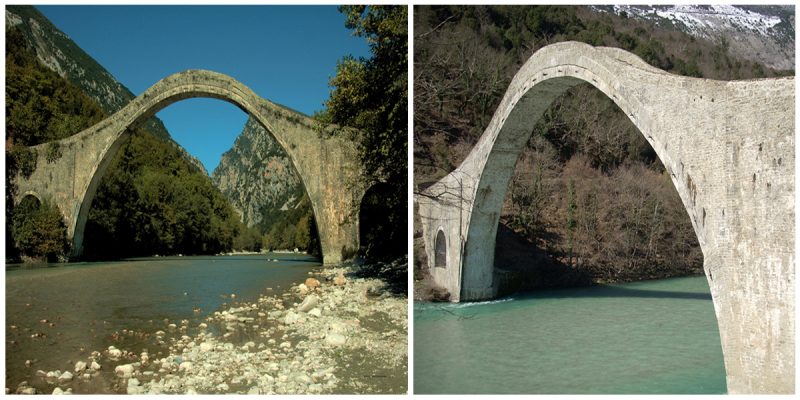Plaka Bridge is a 19th-century stone one-arch bridge located at the borders of Arta and Ioannina prefectures, above the waters of Arachthos River, Greece.
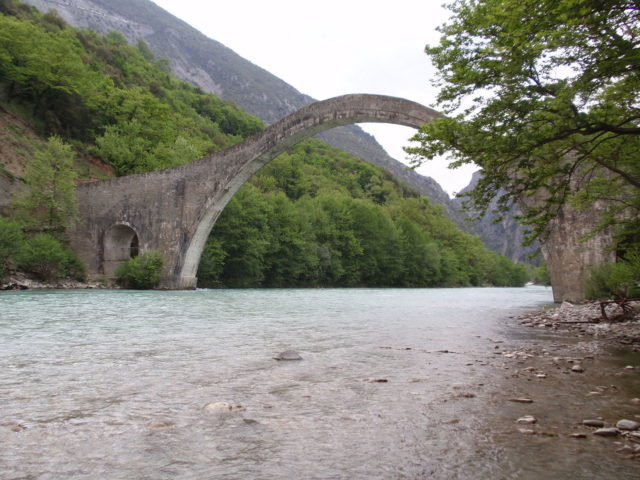
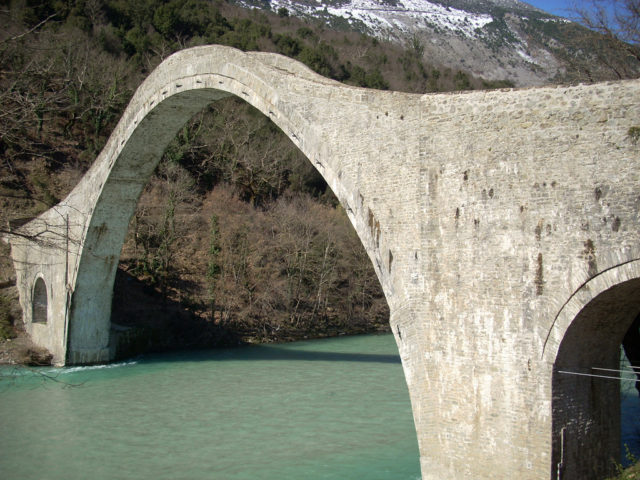
With the main arch measuring 40.2 meters long and 21 meters tall at its apex, it was the largest single-arch bridge in Greece and the Balkans, and the third largest one-arch stone bridge in Europe. It also had two small auxiliary arches of 6 meters (20 ft) width on its two sides. It was considered “one of the most difficult, single-arch bridges to construct.”
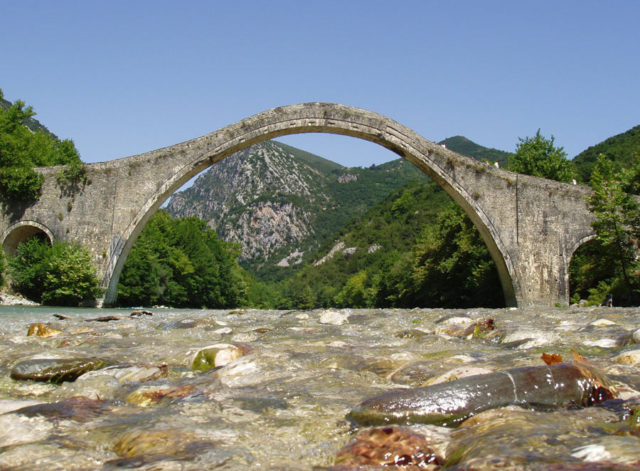
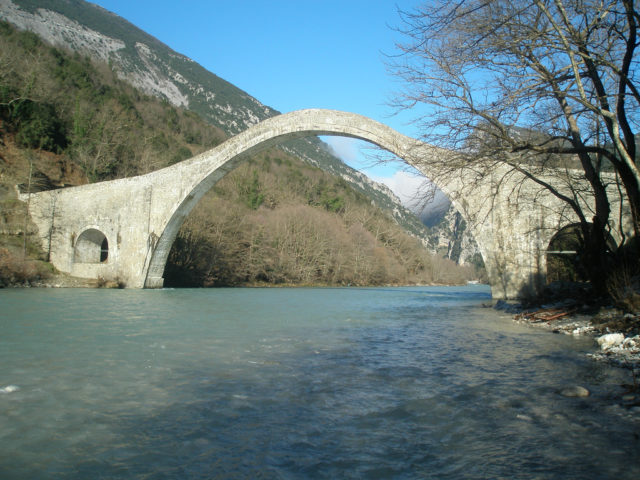
The bridge was built upon the order of Ottoman Sultan Abdülaziz and was completed in 1866 under the supervision of the famous local builder Kostas Bekas, who came from the nearby village Pramanta. Two previous attempts by other builders in 1860 and 1863 had proven unsuccessful, with the bridge collapsing during construction (in 1863 it fell down on the very day of its inauguration). The cost of construction, 180,000 kuruş, was covered by the local communities and the rich merchant Ioannis Loulis.
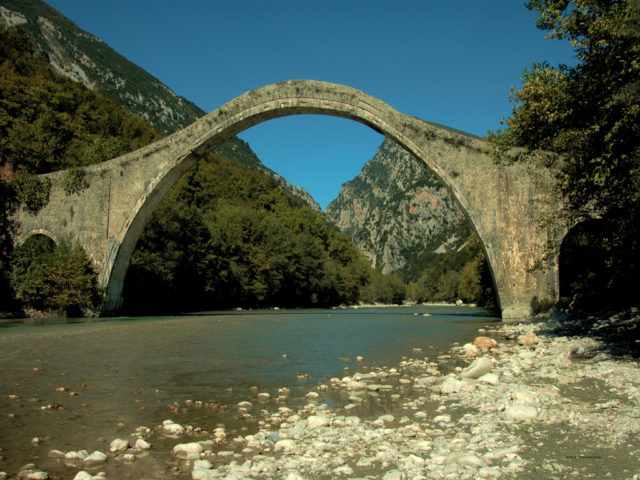
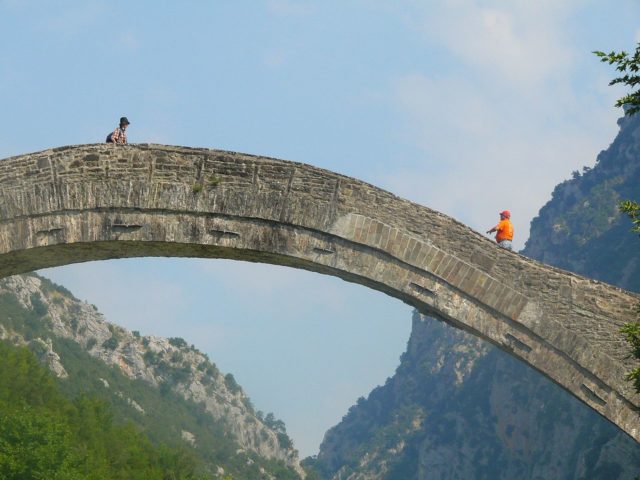
Between 1880 and 1912 (the First Balkan War), the bridge marked the border between the Kingdom of Greece and the Ottoman Empire, and a customs building was erected alongside it, which still survives. The bridge stood for 148 years, surviving German bombings during the Second World War. It came out unscathed with only minor damage, which was quickly repaired by the locals using cement.
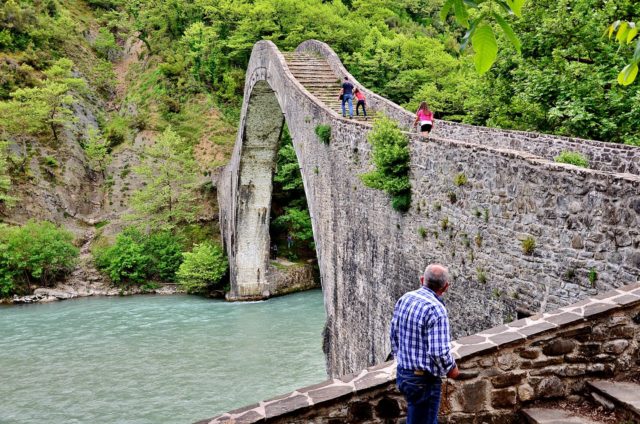
The historic bridge, which was one of the most impressive examples of Greek popular architecture, collapsed on 1 February 2015. A flash flood caused by heavy rainfall caused the Arachthos River to rip the bridge’s foundations from the riverbanks leading the central section of the bridge to collapse and be washed away. It was considered one of the region’s most important landmarks.
